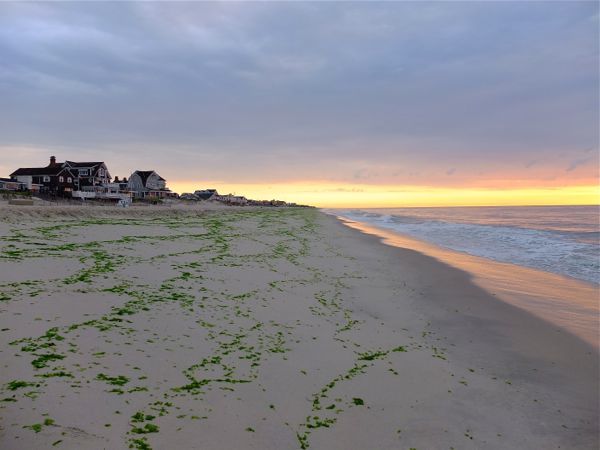DEP Water Supply Plan Still Buried In Gov. Christie’s Office
DEP Stonewalls the Water Supply Advisory Council – Again
DEP Managers Chastise Council For Their Public Criticism
New “Asset Management” Program Killed In Its Cradle
The NJ Water Supply Advisory Council (WSAC) held its regular monthly meeting at the DEP building on Friday. Here’s a quick note on what transpired:
Water Supply Plan Update Remains Stalled In Gov.’s Office
The WSAC recently embarrassed DEP Commissioner Martin and Governor Christie, by inadvertently publicly releasing a private letter to DEP Commissioner Martin expressing their frustration with long delays in public release of the Water Supply Master Plan Update and their inability to review the latest draft of the Plan.
That letter generated embarrassing new coverage, see:
That episode led to a discussion during the May 15, 2015 WSAC meeting, in which DEP Assistant Commissioner Kennedy admonished the WSAC – (following is verbatim from the minutes approved on Friday):
- This letter was meant to be the Commissioner (sic) and never intended to be public… AC Kennedy does not know why the WSP has not come out yet.
- Individual members, or other entities, could write letters to the Governor seeking action on the plan, but this should not come from the Council as a whole.
- AC Kennedy informed the Council that parts of the WSP cannot be released to them at this time.
On Friday, the DEP staff to the WSAC reiterated that the WSP Update was still in the Governor’s Office for review and they were not authorized to talk about it.
Asset Management Initiative Stalled By Industry Opposition To DEP Regulation
With much fanfare, the DEP rolled out its new “asset management” initiative way back in 2010:
The proposal grew out of the Christie Administration’s “infrastructure asset management and financing” initiative discussed at last October’s Clean Water Council annual public hearing at DEP. BPU President Lee Solomon spoke at that hearing – see: Clean Water Council Considering Privatization
Since then, it’s been nothing but talk – and pushback by the private water companies and public water authorities who strongly oppose new DEP regulations mandating costly asset management requirements.
In response to a question from the WSAC Chairman, at Friday’s meeting, DEP staffers briefed the WSAC on the current status of the asset management initiative, basically signaling that industry opposition to a regulatory initiative had successfully killed it in its crib.
DEP refused to answer direct questions from industry representatives about whether the initiative – a staff strategy recommendation is now pending before Commissioner Martin – would be regulatory or rely on voluntary industry measures.
With passage of water infrastructure privatization, the last thing the industry wants are mandates from DEP telling them how to manage their “assets”.
“Resilience” Initiative Remains To Be Fleshed Out
The Christie DEP has talked a big game about new “resilience” requirements for water infrastructure, designed to respond to the devastation Sandy wrought on ill prepared water and sewer systems.
But the water supply industry and public utility members of the WSAC seem to be out of the loop of these conversations – either that, or like asset management, the resilience initiative is more hot air than substance.
After an extremely vague “briefing” on ongoing resilience efforts by DEP staff, WSAC members expressed concerns with the costs and feasibility of any new resilience efforts and opposed ant DEP regulatory mandates.
The Chairman concluded that resilience “is not a burning issue right now” (that is a direct quote).
How soon they forget.
Legislation on Gov.’s Desk to Mandate Drinking Water Quality Institute Develop Recommendation for TCP
DEP staffer Steve Doughty – a longtime DEP spinner who knows how to avoid a minefield, keeps his head low, and stay on script – briefed the WSAC on the passage of a bill that would require the DWQI to make recommendations on an MCL for 1,2,3 Tri-chlorpropane, a known carcinogen.
Doughty would not respond to my question about whether the Commissioner recommended that the Gov. sign the bill –
Seeming to appease the water purveyors, he highlighted the fact that DEP sought amendments (that gutted the bill) and also sought to downplay the significance of the bill, noting that DEP was still in charge of the MCL process. He also was not aware of the deadline in the bill for DEP action on the DWQI recommendation.
Pinelands Ecological Limits Discussed
During the public comment session, I advised the WSAC about the status of the Pinelands Commission’s regulatory initiative to develop ecologically based thresholds for water withdrawal.
I asked the USGS representative what the Pinelands contract to develop hybrid HUC’s was all about and its scientific rationale. The USGS rep was not familiar with this project and promised to report back next time.
The Pinelands Commission representative at the meeting los was not able to respond.
I asked DEP whether their approach in the WSP Update and the pending water allocation rules would consider ecological thresholds explicitly, as doe in the Pinelands initiative.
DEP staff replied that the DEP’s “Stream Low Flow Margin Method To Assess Water Availability in NJ’s Water-Table-Aquifer Systems” included surrogates for ecological stressor based withdrawal thresholds.
It will be very interesting to see how these technical methods are translated into policy in the WSP Update and the upcoming water allocation regulations.
This is a critical issue to keep on top of.
Dupont and DEP PFOA In National Media Spotlight
I advised the WSAC and DEP that 2 recent national media reports provided a critical focus on NJ DEP:
- A Devastating 3 part series by The Intercept: The Teflon Toxin
- A Report by the Environmental Working Group that cites the work of DEP scientists and the DWQI.
Both are must read stories I will be writing about, having worked on and written about both of them for years now.
[In fact, over 6 years ago, we broke a big part of the NJ PFOA story reported in the Intercept piece by disclosing DEP emails by Commissioner Jackson, see:
Our work was essentially stolen without attribution.
Cannonsville Dam – We Dodged a Bullet
DEP staff briefed the WSAC on the behind the scenes exciting story about the Cannonsville Dam (see NY Times coverage).
One thing I was surpassed by was that the original dam design and contraction did not anchor the dam in bedrock, apparently a mere 30 feet from the current bottom (I’m no engineer, but it sounded like this was a huge design error).
Although this story got virtually no play in NJ, we really dodged a bullet – a dam breach would have caused a massive flood, equivalent to a 500 year storm all the way down the Delaware to Trenton!


